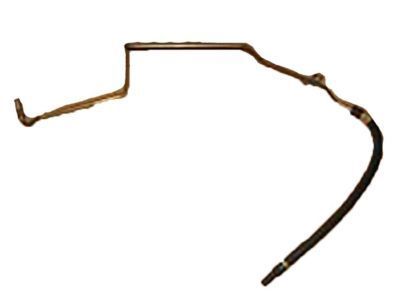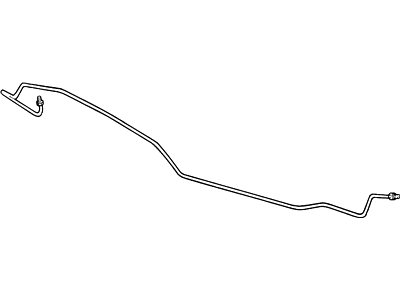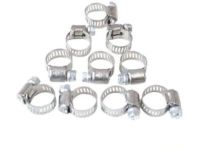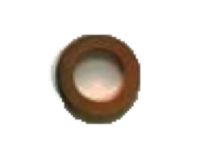About every six months, with the vehicle raised and securely supported on jackstands, inspect the rubber hoses connecting the steel brake lines to the front and rear brake assemblies for cracks, chafing, leaks, blisters, and other damage, as these are crucial parts of the brake system. Use a light and mirror for a thorough check, and replace any damaged hose with a new one. For front brake hose replacement, disconnect the brake line from the hose fitting using a back-up wrench, remove the U-clip from the female fitting at the bracket, and detach the hose. Unscrew the brake hose from the caliper or remove the union bolt and sealing washers, ensuring new sealing washers are used during reassembly. Install the new hose by threading it into the caliper and tightening securely, then install the female fitting in the hose bracket without twisting the hose, followed by the U-clip to retain the fitting. Attach the brake line to the hose fitting with a back-up wrench, ensuring no kinks in the hose and that it does not contact any suspension parts. For rear brake hose replacement on drum brake models, disconnect the hose at the frame bracket, remove the U-clip, and separate the female fitting from the bracket. Disconnect the two brake lines at the junction block, unbolt and remove the hose, then bolt the junction block to the axle housing and connect the lines securely. Install the female end of the hose in the frame bracket without twisting, secure it with U-clips, and attach the steel line fittings carefully. Ensure the frame bracket remains tight, fill the master cylinder reservoir, and bleed the system. For rear disc brake models, disconnect the steel line from the brake hose at the rear axle, remove the union bolt and sealing washers from the caliper, and take off the brake housing and bracket from the axle housing. Bolt the bracket and brake hose loosely to the axle housing, connect the steel line, and use new sealing washers to connect the brake hose to the caliper, tightening the union bolt to the correct torque. Securely tighten the bracket-to-axle housing bolt and steel brake line, then bleed the brakes. When replacing metal brake lines, use the correct parts, avoiding copper tubing, and purchase steel brake lines from a dealer or auto parts store. Prefabricated brake lines with flared tube ends and installed fittings are available, and when installing, ensure the line is securely supported in brackets with adequate clearance from moving or hot components. After installation, check the master cylinder fluid level, add fluid as necessary, bleed the brake system, and test the brakes carefully before driving in traffic.
Posted by FordPartsGiant Specialist 






